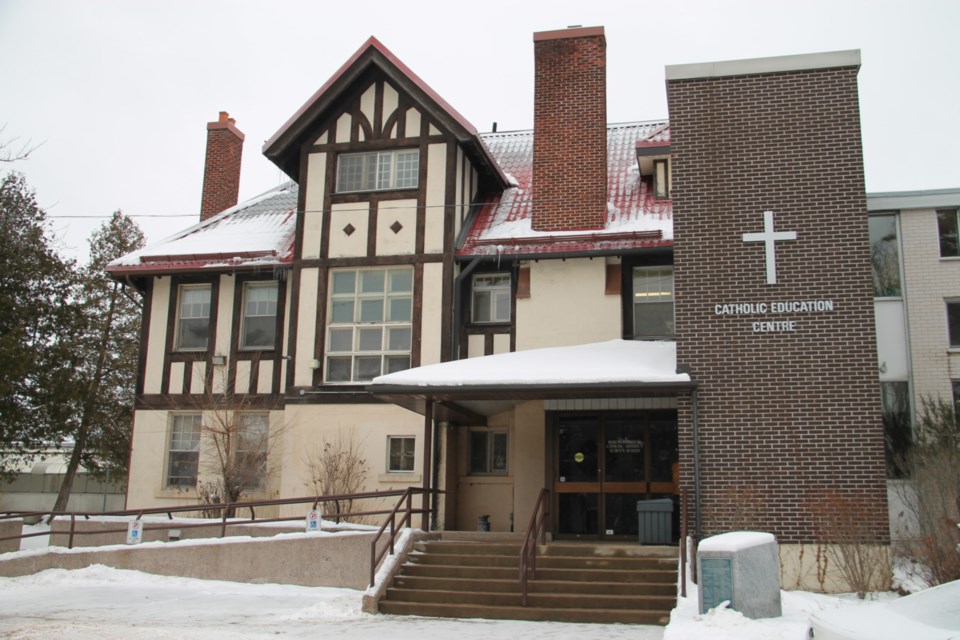Huron-Superior Catholic District School Board officials are currently examining data collected in a student demographic census in an effort to build welcoming and inclusive school environments.
The Ministry of Education provided funding to school boards across Ontario to develop and administer a census to collect student demographic data from Kindergarten to Grade 12. Ontario Education Services Corporation (OESC) was contracted by the H-SCDSB to help with data collection and analysis.
Though participation in the census was voluntary, a written report from Franca Spadafora, H-SCDSB superintendent of education prepared for the board’s regular monthly meeting held Wednesday shows that student participation was far lower than hoped.
“Unfortunately, only nine per cent of elementary students (350 responses from an eligible 3,690 students) and 30 per cent of secondary students (286 responses from an eligible 956 students) completed the survey,” Spadafora’s report stated.
"It is recognized that this is not the complete picture of everyone. However, it is important to present a snapshot of what was shared by those who participated," Spadafora wrote.
The census was administered in the spring of 2023.
Parents or guardians completed the census on behalf of their children at the elementary level while students at the secondary level completed the census themselves.
Students were asked to identify their first language, if they identify as First Nations, Métis or Inuit, ethnic or cultural origin, racial group(s), religion or spiritual affiliation, gender identity, sexual orientation and if they considered themselves to be a person with a disability.
Parents were asked to provide information about themselves, including their highest level of education and employment status.
Students were asked several questions revolving around if they are happy, accepted, safe and represented in course materials.
Participants could choose to skip questions if they did not wish to provide answers.
The data and information was not given anonymously but the board stated that responses to the census questions would be kept private and confidential.
The board wanted to know if students feel that visuals, literature and staff in the schools reflect their culture, said Fil Lettieri, H-SCDSB superintendent of education, speaking to reporters after Wednesday’s board meeting.
“They want to be able to see themselves in the school,” Lettieri said.
“So if we were hearing from families or students that they didn’t connect with the school in that way then we would look at how do we change our approach in terms of creating those opportunities for students, whether it’s selecting resources that are more reflective of that population or things to that effect.”
Lettieri said that textbooks used and activities held at the school are features of school life that can be tailored to make students feel included.
“We were hoping for greater involvement but it’s a good snapshot,” Lettieri said of the lower-than-anticipated census participation.
Analyzing the data, the board’s written report shows that 81 per cent of responses from parents and guardians at the elementary level stated ‘my child feels happy at school’ while 69 per cent of responses stated ‘in my child’s school, they see themselves and their identity reflected positively in learning materials’ as well as ‘their identity reflected positively in events and celebrations.’
51 per cent of respondents at the secondary level stated ‘I enjoy being at school’ while 84 per cent stated ‘at school, I see myself reflected positively in materials educators use in class.’
92 per cent of parents and guardians of elementary school students stated ‘my child feels safe at school’ while a lower number - 77 per cent - stated ‘I feel safe at school’ at the secondary level.
The H-SCDSB Student Census was developed by members of the Student Demographic Data Committee.
Committee members included Superintendent Lettieri, a Catholic faith official, a multilingual learners teacher, Indigenous educators, mental health leader, an official languages special assignment teacher, information technology manager, curriculum coordinator and a special education coordinator.
Lettieri said “the committee really engaged in this process.”
“This data was intended to inform our practice as a board. Where do we see gaps in services, where do we see gaps in meeting those students’ needs, what are our students telling us?” Lettieri said.
He added that the committee will stay engaged despite low participation in the census.
"A participation rate of 70 to 80 per cent is valid research response and representation. As a result, the Board cannot accurately use the data from the Student Census to gain a deeper understanding of the diversity of students within our board and of the cultural, social, and demographic makeup of our students. The Board continues to seek opportunities to learn more about the students it supports. The importance of identifying differences and gaps in students’ experiences and outcomes, based on diverse needs, continues to be a priority," wrote Spadafora in her report to the board.
"The information obtained provided us with a snapshot of the diverse needs within our board. We continue to work on improving equity and inclusive education within our schools. An area of focus is on curriculum resources and culturally relevant teaching. Both in its content and methodology, inclusive curriculum seeks to recognize the board’s commitment to Catholic values and respect for all students," Spadafora wrote in an email to SooToday Thursday.
